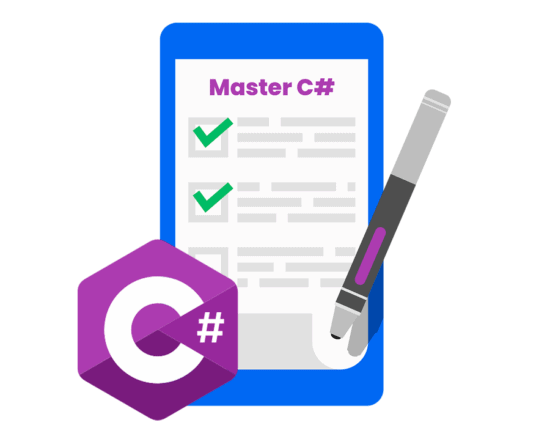Everyone has their own particular style when making flows in Power Automate, and that is part of the beauty of being a developer. But development by its very nature is about sharing and learning from others (its why Stack Overflow is probably most visited developer site).
So after making far too many flows I’ve pulled together what I think of as the best approach to Power Automate (and many other RPA tools), and its called the ‘Direct’ methodology.
The key focus is to:
- Use less actions
- Have less paths
Although when making a flow you have little control in the direction (top down) there are a few options how to get there. Different paths from start to finish are our model/schema. In the Direct Methodology there are 3 models:
- Christmas Tree
- Diamond
- Direct
The direct methodology is the drive to get all flows to the Direct model.
Terminology
- Container – action that contains other actions (Scope,Condition,Switch,ForAll,DoUntil)
- Logic – change of path (Condition,Switch)
- Nesting – actions within a container
- Nesting Levels – containers within containers

Christmas Tree
This is the one you need to try and avoid, as the flow grows it expands horizontally, with multiple different logic paths, and worst of all many end points.
The Christmas tree is defined by the high use of logics/loops/parallel branches with high nesting levels.

Diamond
Sometimes the complexity of a flow means that at a point we may need to grow horizontally and have nesting. But the path always converges to as close to a single path as possible.
A Diamond will still have nesting, but as minimal as possible, with different containers the main exception.

Direct
The gold standard, one path from start to finish. There is only ever one level of nesting and branching is one sided (only one side is used).
Nesting happens in 3 ways, scopes, conditions/switch and loops (forAll & doUntil). Scopes are generally ignored in nesting controls, as they don’t add complexity, but still should be kept to a minimum (personally max of 2 levels of nesting).

Getting from Christmas Tree to Direct
There are few golden rules and techniques that you can use to ensure your flows are as direct as possible.
The Golden Rules are
- Expressions before actions
- No duplication
- Break up large flows into child flows
- Avoid high nesting levels
- Terminate early
- Only one end path
To start lets go from Christrmas Tree to Diamond, the Christmas schema is this
The Christmas tree flow image can be converted to this schema
trigger
->checks condition1
-true
gets condition1 true items
->loops items
checks condition2
-true
update item condition2 true
-false
get lookup items
loops items ->
update item condition2 false with lookup
set variable
-true
sends true email
-false
->gets condition1 false items
->loops items
checks condition2
-true
update item condition2 true
-false
update item condition2 false
set variable
checks condition3
-true
sends true condition3 email
and the Diamond version is
The Diamond flow image can be converted to this schema
trigger
gets conditon1 items
->loops items
->checks condition2
-true
update item true
-false
->checks condition2
-true
get lookup items
update item expression condition2
set variable
->checks condition3
-true
sends true condition3 email
The first thing we do is leverage the if() expression, why have 2 Get items with a condition when you can have just 1 Get Items.
field_3 @{if(equals(triggerBody()['text'],'before'),'eq','gt')} '@{utcNow()}'
The next step we want to do is push any duplicate actions out of the branching into the main branch. This again saves actions (if() expression can be used if any input variations), and it means we always have one end (great for when you want to debug).
Now to Direct
The Direct flow image can be converted to this schema
trigger
gets conditon1 items
->checks condition3
-false
Terminates flow
gets conditon1 and items
->loops items ->
get lookup items
update item expression condition2 & conditon1
sends true condition3 email
This expands on Diamond, with the addition of smart ordering. Just like making anything, the order you build it in will have big impact on how hard it is to make it.
The first thing we do is our terminate early. In the other 2 models we run the entire flow, even if there are no rows to do anything. Instead add a condition to check at the very begining.
Instead of a variable that is marked as true if one of the rows meets a condition, we query the list for the condition, if we get a body with length equals 0 then we terminate.
The next thing we do is take the expression approach to next level. As all paths are using update item, we can have one path. The extra get items action can be ran on every run, this may seem a little wasteful but it saves 2 Power Platform api calls (2 conditions) for 1 SharePoint api call. And again it makes everything so simple to follow.
And because the email send was a condition that we have already actioned (the terminate) every run will send the email.
A key example of the Direct methodolgy working is the escape condition. It terminates early but the key is to moving out of nesting and into a direct path.
It may seem counterintuitive from the UI, but if you think about it in code it goes from
->conditon
-true
action
action
action
-false
to
->conditon
-false
action
action
action
action
which is a lot cleaner.
This is an example, and real life is never so perfect. But the methodology is around getting as close to direct as possible. There will be times when diamond is the best solution, even times when christmas tree is (disposable quick proof of concept as example). But building in a way to be direct will improve stability, readbility and have best optimization.
About the Author
Lead Power Platform Developer with side hustle in Blue Prism. Passion for RPA, previous shadow IT with Excel/VBA/SharePoint.
Reference
Wyatt, D., 2023, Power Automate, The Direct Methodology, Dev.to, Available at: https://dev.to/wyattdave/power-automate-the-direct-methodology-32mf [Accessed on 11 September 2023]
STAY UP TO DATE
Catch up on the latest blogs, eBooks, webinars, and how-to videos.
Not a member? Sign up today to unlock all content.
Subscribe to our YouTube channel for the latest community updates.











